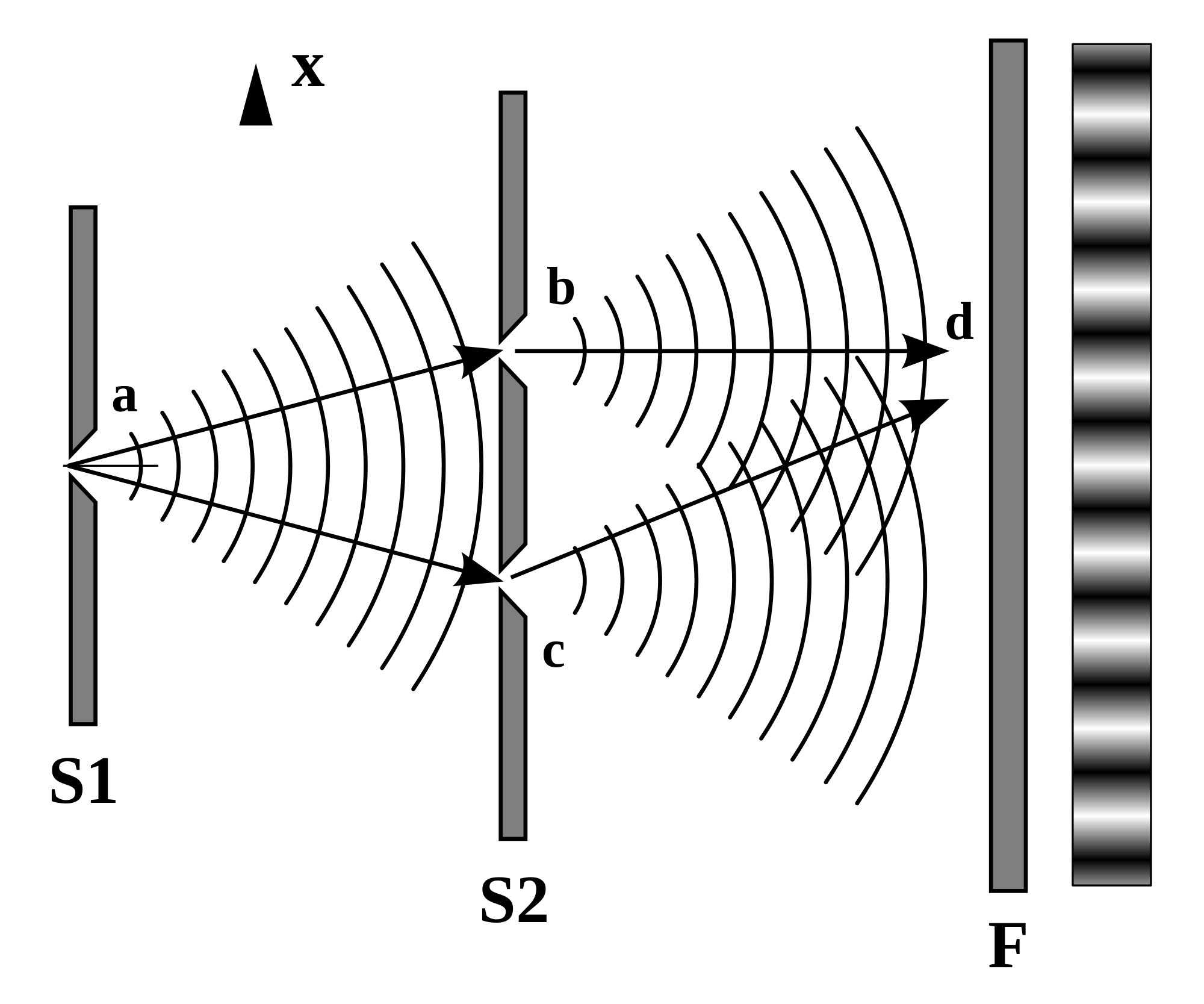-
Some Theory
12/07/2015 at 22:58 • 0 commentsIn 1805 or thereabouts, Thomas Yound performed the famous double slit experiment:
![]()
The purpose of the first slit is to make the light "spatially coherent," meaning it comes from a point-source, of line-source in this case. At the slit, the light diffracts so that is spreads out and covers both of the next two slits. The waves from each of the two slits on the rightr interfere with each other, creating the light and dark bands seen on a screen to the far right.
The waves, in this case, are not electromagnetic waves but rather are quantum waves of the square-root of the probability of finding a photon anywhere on the wave. The double-slit experiment can be done with electrons, protons, atoms, or buckyballs (which have a very small wavelength).
What this all means is that a photon (or electron, proton, buckyball) is initially in a state of superposition with respect to its position. when "measured," the photon stops being in many places and instead is in one place where it gets measured.,
Where is gets interesting is when two photons (or other quanta) are created in such a way that there is a relationship between them. When a violet photon is absorbed by a beta-barium-borate (BBO) crystal and two infrared photons are emitted, their momentum must add up to the momentum of the original violet photon. Also, their polarizations can be related - either the same or orthogonal. These properties are in a state of superposition until they interact with stuff, whereby one photon takes on a value and the other photon takes on the corrosponding value.
If the two photons didn't take on correlated values, it would be possible to violate conservation of momentum. When measured, each photon takes on a value instantaneously regadless of separation distance and light speed, and since the universe is relativistic, the idea of "instantaneous" can get very interesting.
The obviousl question to ask is whether the photons really do have values for their properties and that we just can't predict them. The answer to that question is definitely "NO!" John Bell came up with a theorem that showed the correlation rates could only reach a certain percentage if they did actually have values, and quantum mechanics predicted a higher rate. See Bell's Inequality. Many experiments show that the rate of correlation is what QM predicts, ruling out these "hidden variables" theories.
-
BBO Crystal
11/19/2015 at 19:01 • 0 commentsI do have a BBO (bet-barium-borate) crystal. It's cut for type II, 405nm, colinear spontaneous parametric down conversion (SPDC), which means that it will produce two cones of 810nm light from a 405nm source, and those cones overlap along a line. In that overlap will be pairs of photons that are momentum and polarization entangled. They can be separated with a polarizing beam splitter (PBS) which will break the polarization entanglement but should leave the momentum entanglement intact. That will be great for sending one beam through the double slit while the other goes to the lens and screen/detector.
I have a dichroic mirror to reflect off the non-downconverted light, leaving just the IR light which includes the entangled pairs.
I haven't messed with this yet and am moving >:[ What I want to do is get stuff set up to send a beam from a cheap, ebay laser diode through the BBO and PBS, then detect photons from each and count both raw detections and coincidence detections. That should give me an idea about how many entangles pairs and what percentage of the total I get.
Next is the critical experiment: send one beam through a double-slit. Dr. Cramer said the "anti-signal" will cause photons (that would be filtered out by the coincidence detector - thus, not entangled) to fill in the otherwise dark parts of the interference pattern. So putting one of these beams through a double-slit will NOT produce an interference pattern, if I don't filter with a coincidence detector? That's really hard to believe. Essentially, each photon's wave function goes through each slit, diffracts into concentric arcs from each slit where the arcs are maxima of the wave function. Those arcs overlap and interfere constructively at various angles. It seems to me that in order to get an inverse interference pattern, which is what this "anti-signal" light would do, the phases of the waves at each slit would have to be different by pi, and I can't see how/why that would happen.
There's no help but to build it. Moving. And I need optical mount that I can adjust, which I can't work on because I'm moving! However, I can post the designs for those, possibly.
Quantum Entanglement Communication
An attempt to send information using quantum entanglement based on an experiment done by Birgit Dopfer in 1998
